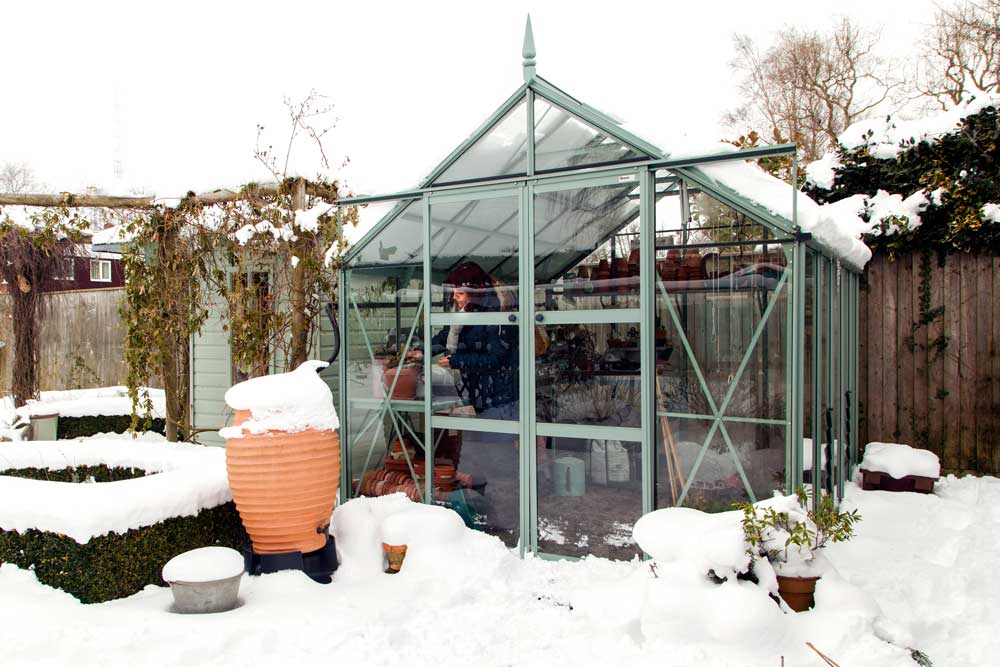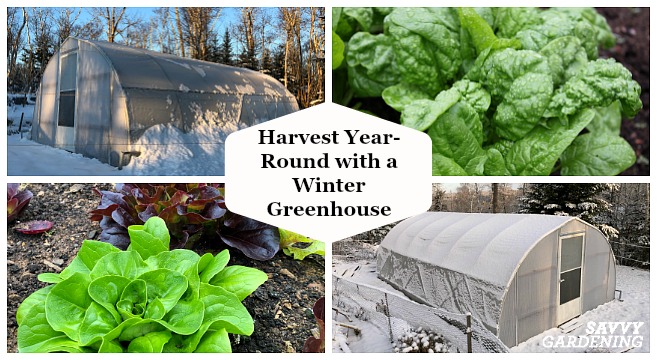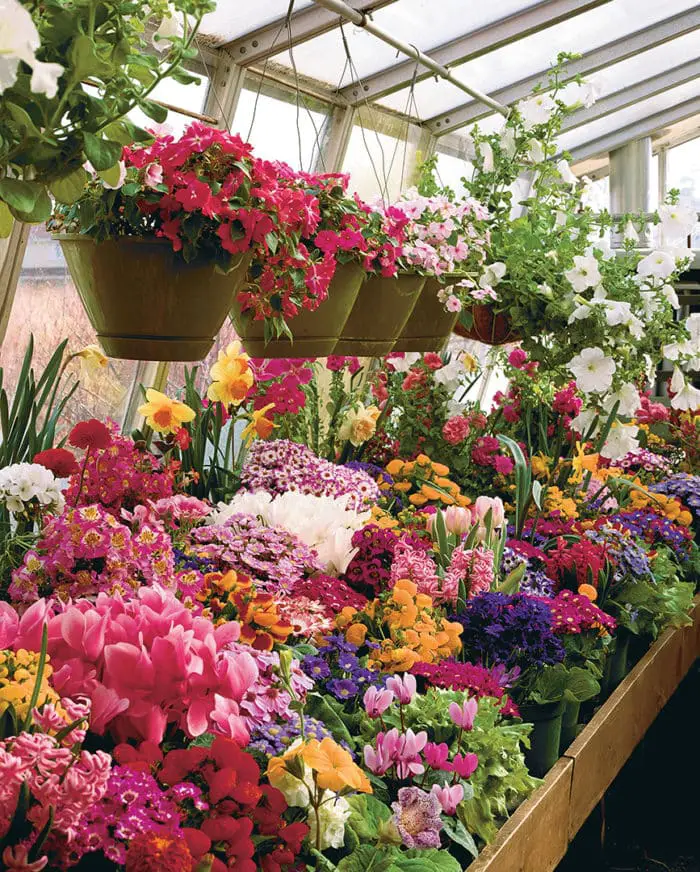Yes, you can keep plants in a greenhouse during winter. Proper insulation and heating are essential to maintain optimal growing conditions.
A greenhouse provides a controlled environment for plants during winter. With the right setup, you can protect delicate plants from harsh weather. Insulating your greenhouse is crucial to retain heat and prevent cold drafts. Using bubble wrap or thermal screens can help.
Heaters and heat mats can maintain consistent temperatures inside the greenhouse. Ventilation is also important to prevent mold and mildew. Ensure there is adequate light, either natural or artificial, to support photosynthesis. Regularly monitor humidity levels to avoid excessive moisture. A well-maintained greenhouse can keep your plants healthy and thriving all winter long.
Choosing The Right Greenhouse
Winter can be harsh on plants. A greenhouse can provide the necessary protection. But, choosing the right greenhouse is essential. The right greenhouse ensures plants thrive even in cold months. Let’s break down the key factors.
Materials To Consider
Greenhouses come in various materials. Each has its pros and cons. Here are some common options:
| Material | Advantages | Disadvantages |
|---|---|---|
| Glass | Excellent light transmission | Can break easily |
| Polycarbonate | Durable and good insulation | Less light transmission than glass |
| Plastic Film | Cost-effective | Less durable, may need frequent replacement |
Size And Location
The size of your greenhouse matters. A larger greenhouse can hold more plants. But, it also needs more heating.
- Small Greenhouse: Ideal for beginners.
- Medium Greenhouse: Good for hobbyists.
- Large Greenhouse: Best for serious gardeners.
Location is equally important. Place your greenhouse in a sunny spot. Ensure it is sheltered from strong winds. Proper positioning helps in maintaining a consistent temperature inside.
Choosing the right greenhouse involves considering the materials, size, and location. Proper choices ensure your plants stay healthy all winter long.

Credit: www.greenhousesdirect.co.uk
Insulation Techniques
Keeping plants in a greenhouse during winter can be a challenge. Insulation techniques play a crucial role in maintaining a warm environment. Effective insulation ensures your plants stay healthy and thrive.
Bubble Wrap
Bubble wrap is a simple yet effective insulation material. It traps heat and prevents cold air from entering. Use large bubble wrap for better insulation. Attach it to the inside walls of the greenhouse.
You can use adhesive tape or clips to secure the bubble wrap. Ensure there are no gaps for the cold air to seep through. This method is cost-effective and easy to implement.
Thermal Screens
Thermal screens are another excellent insulation technique. These screens can be automatic or manual. They help in retaining heat during the night.
Thermal screens are made from materials that reflect heat. They can be rolled up during the day to allow sunlight in. At night, the screens create an extra layer of protection.
Installing thermal screens might require some investment. But the benefits outweigh the costs, especially in harsh winters. They are durable and provide long-term insulation.
Heating Options
Winter can be harsh on plants, especially those in a greenhouse. To keep them safe, you need reliable heating options. This section explores electric heaters and solar heating. These methods ensure your plants stay warm and thrive through the cold months.
Electric Heaters
Electric heaters are a popular choice for greenhouses. They are easy to use and install. These heaters provide consistent warmth. Here are some key points:
- Thermostat Control: Set the temperature easily.
- Safety Features: Overheat protection and automatic shutoff.
- Types: Fan heaters, convection heaters, and infrared heaters.
Using an electric heater ensures your greenhouse stays warm. They are efficient and reliable.
Solar Heating
Solar heating is eco-friendly and cost-effective. It uses sunlight to warm your greenhouse. Here are some benefits:
- Renewable Energy: Uses the sun’s energy, which is free.
- Low Operating Costs: Reduces electricity bills.
- Eco-Friendly: No harmful emissions.
Solar heating systems can include solar panels and thermal mass. These systems store heat during the day. They release it at night, keeping your plants warm.
| Heating Option | Benefits |
|---|---|
| Electric Heaters | Consistent warmth, easy to use, safety features |
| Solar Heating | Eco-friendly, low costs, renewable energy |
Choosing the right heating option is crucial. It ensures your plants survive and thrive during winter.
Managing Humidity
Keeping plants in a greenhouse during winter requires managing humidity. Humidity plays a crucial role in plant health. Too much moisture can lead to mold and mildew. Too little, and plants may dry out. Both extremes are harmful, especially in winter.
Ventilation Strategies
Proper ventilation is key to controlling humidity levels. Natural ventilation involves opening vents and doors. This allows fresh air to circulate. Mechanical ventilation uses fans to move air. Both methods help maintain balanced humidity.
- Open vents during the warmest part of the day.
- Use exhaust fans to remove humid air.
- Install circulation fans to move air within the greenhouse.
Humidity Control Devices
Using devices can help manage humidity more precisely. Dehumidifiers remove excess moisture from the air. Humidifiers add moisture when the air is too dry. Both can be automated for consistent control.
| Device | Function | Benefits |
|---|---|---|
| Dehumidifier | Reduces moisture | Prevents mold and mildew |
| Humidifier | Adds moisture | Prevents plant dehydration |
Hygrometers are useful for monitoring humidity levels. Place them around the greenhouse for accurate readings. Keeping humidity in check ensures healthy plant growth during winter.
Lighting Solutions
Keeping plants in a greenhouse during winter can be tricky. The biggest challenge is ensuring they get enough light. Shorter days and cloudy skies reduce natural light. To solve this, we need good lighting solutions. Let’s explore the best options.
Grow Lights
Grow lights are special lights for plants. They mimic the sun’s rays. These lights help plants grow even in dark winter days.
LED grow lights are popular. They use less energy and last long. They also produce less heat, so plants won’t burn. You can set them on a timer. This way, plants get light for the right amount of time each day.
Fluorescent lights are another option. They are cheaper but not as efficient as LED lights. They work well for small plants or seedlings.
| Type of Grow Light | Energy Efficiency | Cost | Heat Production |
|---|---|---|---|
| LED | High | Medium | Low |
| Fluorescent | Medium | Low | Medium |
Natural Light Maximization
Make the most of natural light in your greenhouse. Clean the glass regularly. Dust and dirt block sunlight. Keep the glass clear for maximum light.
Arrange plants smartly. Place taller plants at the back. Shorter plants should be in front. This way, all plants get light evenly.
Use reflective surfaces. Aluminum foil or white paint can reflect light. Place them on the walls. This helps spread light to all parts of the greenhouse.
- Clean glass often
- Arrange plants by height
- Use reflective materials
By using these tips, your plants will thrive all winter long.

Credit: mulberrygreenhouses.com
Watering Practices
Proper watering practices are essential for keeping your plants healthy in a winter greenhouse. During winter, the watering needs of plants change. Understanding these changes helps in maintaining plant health and growth.
Frequency Adjustments
Winter means less sunlight and cooler temperatures. Plants need less water during this season. Overwatering can lead to root rot and other issues.
- Water plants less often.
- Check soil moisture before watering.
- Use a moisture meter for accuracy.
Plants in a greenhouse also have different humidity levels. This affects how often they need watering. Adjust your schedule based on the specific needs of each plant type.
Avoiding Overwatering
Overwatering can be harmful, especially in winter. Roots can rot, and plants can suffer. It’s important to avoid this common mistake.
- Use well-draining soil.
- Ensure pots have drainage holes.
- Water plants in the morning.
Morning watering helps plants absorb water better. It also allows excess water to evaporate during the day. Check the soil and only water if it feels dry.
| Plant Type | Watering Frequency |
|---|---|
| Succulents | Once every 2-3 weeks |
| Leafy Greens | Once a week |
| Herbs | Once every 5-7 days |
Keep an eye on your plants and adjust watering based on their appearance and soil moisture. Healthy plants will show vibrant colors and sturdy growth.
Choosing Winter-friendly Plants
Keeping plants in a greenhouse during winter can be a challenge. Selecting the right winter-friendly plants is crucial. This ensures your plants thrive even in cold conditions.
Cold-tolerant Varieties
Some plants handle the cold better than others. Opt for cold-tolerant varieties to maximize success in winter. Here are some great choices:
- Spinach – A hardy vegetable that loves the cold.
- Kale – Thrives in low temperatures and even improves in flavor.
- Carrots – Can survive frost and grow well in cool weather.
- Broccoli – Prefers cooler climates and grows well in winter.
These varieties can withstand lower temperatures. They often continue to grow and produce during the winter months.
Perennials Vs. Annuals
Choosing between perennials and annuals is another key step. Perennials live for more than two years. They return each season. Annuals complete their life cycle in one year. They need replanting each season.
| Perennials | Annuals |
|---|---|
| Lavender | Petunias |
| Chives | Marigolds |
| Thyme | Impatiens |
| Sage | Snapdragons |
Perennials are often more robust. They can handle the winter better. Annuals can provide bright colors. They may need more attention to survive winter.
To maximize your greenhouse’s potential, mix both types. This ensures a vibrant and productive winter garden.
Pest And Disease Control
Keeping plants in a greenhouse during winter can be a great way to extend the growing season. However, pests and diseases can still pose a threat. Proper pest and disease control is crucial for maintaining healthy plants during the colder months.
Preventative Measures
Implementing preventative measures is the first step in pest and disease control. Here are some key strategies:
- Inspect plants regularly for signs of pests or disease.
- Maintain cleanliness in the greenhouse.
- Ensure proper ventilation to reduce humidity.
- Use sterilized soil and clean pots.
Organic Solutions
Using organic solutions can help manage pests and diseases without chemicals. Consider these options:
| Solution | Application |
|---|---|
| Neem oil | Spray on affected plants to repel insects. |
| Insecticidal soap | Apply to plants to kill soft-bodied insects. |
| Companion planting | Grow pest-repellent plants alongside main crops. |
Natural predators can also help control pest populations. Ladybugs and predatory mites are effective against aphids and spider mites.

Credit: savvygardening.com
Frequently Asked Questions
How To Keep Plants Alive In A Greenhouse During Winter?
To keep plants alive in a greenhouse during winter, maintain proper insulation, use a heater, ensure adequate lighting, water moderately, and monitor humidity levels.
How Cold Is Too Cold For Plants In A Greenhouse?
Temperatures below 32°F (0°C) can be too cold for most greenhouse plants. Keep the greenhouse above this to protect plants.
Can Plants Survive In An Unheated Greenhouse?
Yes, plants can survive in an unheated greenhouse. Choose cold-hardy plants and use insulation methods to protect them.
Can You Grow Anything In A Greenhouse In Winter?
Yes, you can grow many plants in a greenhouse during winter. Use supplemental lighting and heating for optimal results. Suitable crops include leafy greens, herbs, and cold-tolerant vegetables.
Conclusion
Winter greenhouses can be a great option for plant care. Proper insulation and heating ensure plant health. Monitor temperature and humidity levels regularly. Choose cold-tolerant plants for better results. With the right conditions, your greenhouse can thrive all winter long.
Enjoy the beauty of healthy plants year-round!

My mission is to help you bring the beauty of nature indoors with expert advice, detailed plant care guides, and creative design ideas.





Leave a Reply